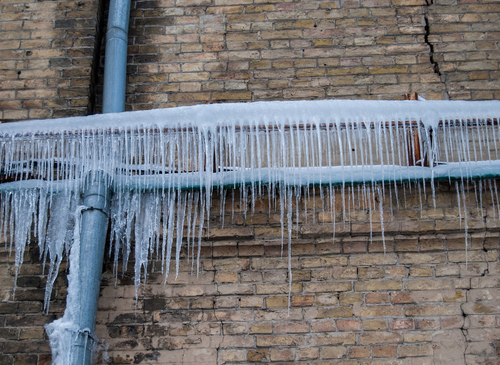Crucial Tips to Avoid Frozen Plumbing in Cold Weather
Instant QuoteEach person may have their unique piece of advice on the subject of Helpful Tips to Prevent Frozen Pipes this Winter.

Winter can wreak havoc on your plumbing, particularly by freezing pipes. Below's exactly how to avoid it from happening and what to do if it does.
Intro
As temperature levels decrease, the threat of icy pipelines rises, potentially resulting in costly repair work and water damage. Understanding how to prevent frozen pipelines is critical for home owners in cold environments.
Avoidance Tips
Protecting prone pipelines
Wrap pipes in insulation sleeves or make use of warmth tape to secure them from freezing temperatures. Concentrate on pipelines in unheated or external locations of the home.
Heating methods
Maintain interior spaces adequately heated up, especially areas with plumbing. Open up cabinet doors to permit warm air to distribute around pipelines under sinks.
How to identify frozen pipelines
Seek lowered water flow from taps, unusual smells or sounds from pipes, and noticeable frost on exposed pipelines.
Long-Term Solutions
Architectural changes
Consider rerouting pipelines far from exterior walls or unheated locations. Include additional insulation to attics, cellars, and crawl spaces.
Upgrading insulation
Buy high-grade insulation for pipes, attics, and walls. Correct insulation assists maintain consistent temperature levels and decreases the danger of icy pipelines.
Safeguarding Outdoor Pipes
Yard hoses and outside taps
Detach and drain pipes garden hose pipes before winter months. Mount frost-proof spigots or cover outdoor faucets with protected caps.
Understanding Icy Pipelines
What triggers pipes to freeze?
Pipes ice up when subjected to temperatures listed below 32 ° F (0 ° C) for expanded periods. As water inside the pipelines freezes, it broadens, taxing the pipe wall surfaces and potentially triggering them to burst.
Threats and damages
Frozen pipelines can result in water supply disruptions, home damages, and pricey repair work. Ruptured pipes can flood homes and cause considerable structural damage.
Signs of Frozen Piping
Identifying icy pipes early can stop them from bursting.
What to Do If Your Pipes Freeze
Immediate actions to take
If you presume frozen pipes, maintain faucets open to relieve pressure as the ice melts. Use a hairdryer or towels taken in hot water to thaw pipes slowly.
Conclusion
Stopping frozen pipelines calls for proactive procedures and quick feedbacks. By recognizing the causes, indicators, and safety nets, homeowners can secure their pipes during winter.
5 Ways to Prevent Frozen Pipes
Drain Outdoor Faucets and Disconnect Hoses
First, close the shut-off valve that controls the flow of water in the pipe to your outdoor faucet. Then, head outside to disconnect and drain your hose and open the outdoor faucet to allow the water to completely drain out of the line. Turn off the faucet when done. Finally, head back to the shut-off valve and drain the remaining water inside the pipe into a bucket or container. Additionally, if you have a home irrigation system, you should consider hiring an expert to clear the system of water each year.
Insulate Pipes
One of the best and most cost-effective methods for preventing frozen water pipes is to wrap your pipes with insulation. This is especially important for areas in your home that aren’t exposed to heat, such as an attic. We suggest using foam sleeves, which can typically be found at your local hardware store.
Keep Heat Running at 65
Your pipes are located inside your walls, and the temperature there is much colder than the rest of the house. To prevent your pipes from freezing, The Insurance Information Institute suggests that you keep your home heated to at least 65 degrees, even when traveling. You may want to invest in smart devices that can keep an eye on the temperature in your home while you’re away.
Leave Water Dripping
Moving water — even a small trickle — can prevent ice from forming inside your pipes. When freezing temps are imminent, start a drip of water from all faucets that serve exposed pipes. Leaving a few faucets running will also help relieve pressure inside the pipes and help prevent a rupture if the water inside freezes.
Open Cupboard Doors
Warm your kitchen and bathroom pipes by opening cupboards and vanities. You should also leave your interior doors ajar to help warm air circulate evenly throughout your home.

I hope you enjoyed our part about Helpful Tips to Prevent Frozen Pipes this Winter. Thank you so much for taking the time to read through our post. Are you aware of someone else who is enthusiastic about the topic? Feel free to promote it. Many thanks for your time. Come back soon.
Or Book Technician Here